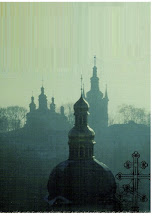
 Olivia Sladen is the head of Metis Art Risk Consultancy in London which provides provenance and due diligence research to the art market. She is interviewed by Noah Charney is the founder of ARCA, the Association for Research into Crimes against Art at Suite101 ('Provenance, Art Theft, and Getty Loot ', Dec 13, 2010). The springboard for the article are the returns of items from their collections to source countries claiming (and seemingly able to demonstrate) they were looted. These major museums had not "insisted on thoroughly-researched provenance. As a result they wound up spending millions on looted and stolen art which they have now been forced to return". There has been a growing call in the art market to assess the provenance documents of an art object at the time of sale or purchase to ensure that it has good legal title and has not been stolen, looted or forged. Olivia Sladen defines provenance as detailing "the origin and history of ownership of an object", so what Gill calls "collecting history". According to Sladen:
Olivia Sladen is the head of Metis Art Risk Consultancy in London which provides provenance and due diligence research to the art market. She is interviewed by Noah Charney is the founder of ARCA, the Association for Research into Crimes against Art at Suite101 ('Provenance, Art Theft, and Getty Loot ', Dec 13, 2010). The springboard for the article are the returns of items from their collections to source countries claiming (and seemingly able to demonstrate) they were looted. These major museums had not "insisted on thoroughly-researched provenance. As a result they wound up spending millions on looted and stolen art which they have now been forced to return". There has been a growing call in the art market to assess the provenance documents of an art object at the time of sale or purchase to ensure that it has good legal title and has not been stolen, looted or forged. Olivia Sladen defines provenance as detailing "the origin and history of ownership of an object", so what Gill calls "collecting history". According to Sladen: It usually consists of documents or markings on an object, and may include receipts, auction catalogues, academic articles, documents and letters detailing transactions and ownership and, in the case of antiquities, archaeological documentation and export licences. Provenance documents help the art market determine the identity, authenticity and legal ownership of an art object.But it is not enough to have a vague verbal provenance given by a dealer, or even a sheaf of pieces of paper in a folder. Sladen says:
We have sadly seen an over reliance on assessing provenance documents in place of expert authentication and scientific examination. Art criminals and fraudsters have adapted their modus operandi accordingly. As a result we have seen a rising number of cases where forged or stolen art objects have entered the art market because of their accompanying forged provenance documents. There needs to be a wider awareness of this issue among dealers, auction houses and collectors who must authenticate, not just the art object, but the actual provenance documents as well.This is a point that has been made time and time again with antiquities, proffered assurances are not enough, there must be a means to verify the information given, otherwise it is worthless for ascertaining legitimate origins.
Asked what she thinks is the way forward in terms of minimizing art crime and fraud, Ms Sladen suggests:
As a starting point, there needs to be a greater emphasis on performing due diligence at the time of sale or purchase. Provenance documents must be closely examined to ensure their authenticity, as any discrepancies may indicate that there is an issue with authenticity or legal title. There also needs to be a more thorough approach to due diligence to mitigate the risk of purchasing a forged or stolen art object.Certainly the stories of acquisition of objects in several major museums discussed in the past show that the accompanying documentation all too often has some glaring holes and inconsistencies. Why were they not spotted?
.








No comments:
Post a Comment